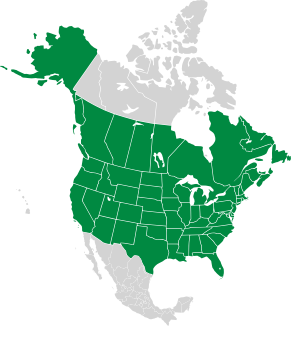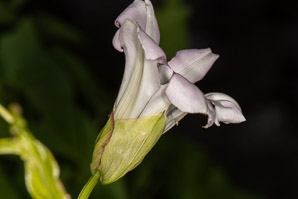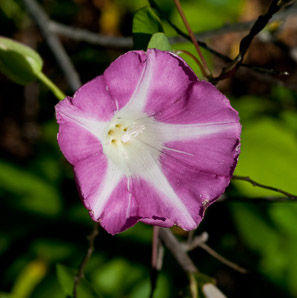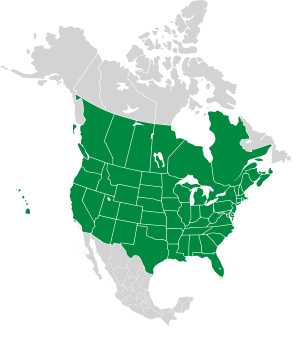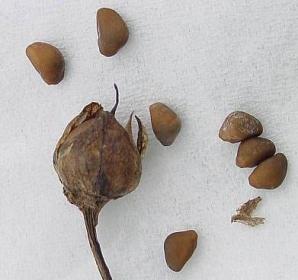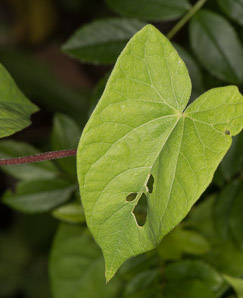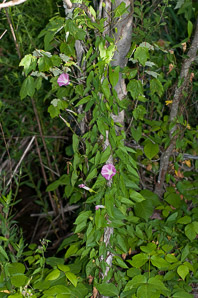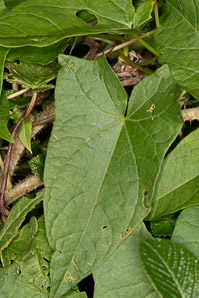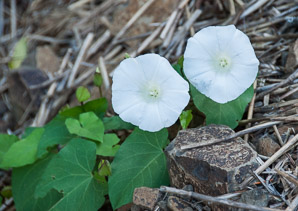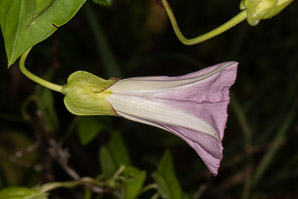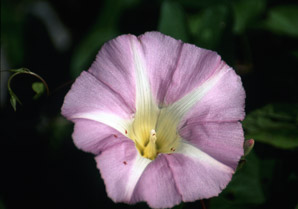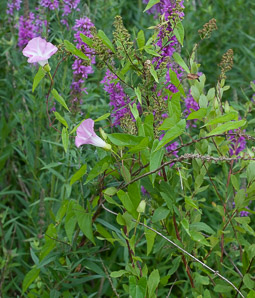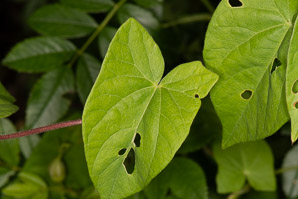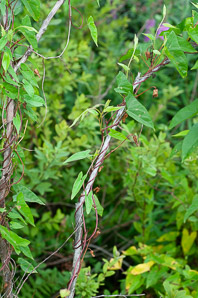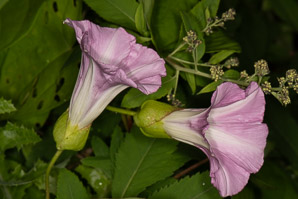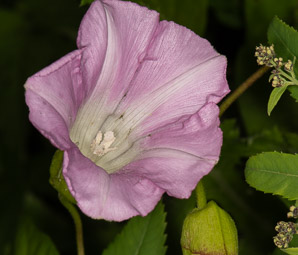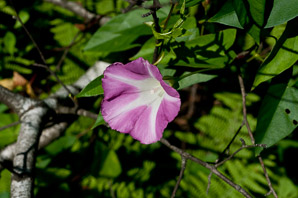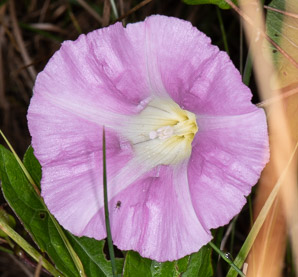
|
Calystegia sepium (L.) R. Br. Hedge morning glory, larger bindweed, hedge bindweed, hedge false bindweed
Bindweeds, sometimes called wild morning glories, are vines that twine around other plants. They are native to temperate regions of Europe, Asia, Africa, North America, Australia, and Argentina. They are attractive, but they are aggressive and, in some areas, invasive. Identification: This species is a vine that climbs up to about 12′ (3.7 m). The vine itself is light green or red. The flowers are trumpet-shaped, up to 3″ (7.6 cm) across, usually white, occasionally pink and white, with a yellow throat. (If you have seen morning glories, you will recognize these flowers.) Leaves are shaped like arrowheads (sagittate). Seed pods are nearly round, containing two seeds looking similar to orange segments. Some similar-looking plants: |
9/7/2021 · Kennebec River Bridge, Bowdoinham, Maine · ≈ 4½ × 3″ (11 × 7.9 cm) 6/21/2010 · Nashua River Rail Trail, Groton Center, Groton, Massachusetts · ≈ 9 × 6″ (23 × 15 cm) |
||||||||||||||||||||||||||||
|
| |||||||||||||||||||||||||||||
Convolvulus arvensis |
You are here Calystegia sepium |
||||||||||||||||||||||||||||
|---|---|---|---|---|---|---|---|---|---|---|---|---|---|---|---|---|---|---|---|---|---|---|---|---|---|---|---|---|---|
| Common Name |  |
 |
|||||||||||||||||||||||||||
| Plant | Vines are 1½-6½′ (50-200 cm) high. | Vine up to 12' in length, stem light green or red | |||||||||||||||||||||||||||
| Flowers | Trumpet-shaped, ⅜-⅞″ (1-2.5 cm) in diameter, and white or pale pink. Small bracts are separate from the flowers. | Trumpet-shaped, up to 3" across, white or pink and white, with a yellow throat | |||||||||||||||||||||||||||
| Leaves | ¾-1¾″ (2-5 cm) × ⅜-1″ (1-3 cm) wide, either linear or shaped like arrowheads (sagittate). | Shaped like arrowheads (sagittate) | |||||||||||||||||||||||||||
| Fruit | Seeds ⅛″ (3.2 mm) long, with two flat sides and a convex side, like an orange segment. | Nearly round, in pairs, like segments of an orange | |||||||||||||||||||||||||||
| Range/ Zones |
|
|
|||||||||||||||||||||||||||
| Type | Wild | Wild | |||||||||||||||||||||||||||
Seed pod and seeds. By Leo Michels. 
Online References:
Plants for a Future, a resource and information centre for edible and otherwise useful plants
The Virginia Tech Weed Identification Guide
7/5/2021 · Curtis Farm Preserve, Harpswell, Maine · ≈ 3 × 5″ (8.4 × 12 cm) 
6/21/2010 · Nashua River Rail Trail, Groton Center, Groton, Massachusetts 
9/7/2021 · Kennebec River Bridge, Bowdoinham, Maine · ≈ 4½ × 7″ (11 × 16 cm) 
8/25/2007 · Tillamook State Forest, Oregon ![]() ID is uncertain
ID is uncertain 
7/5/2021 · Curtis Farm Preserve, Harpswell, Maine · ≈ 6 × 3½″ (14 × 9.4 cm) 
7/15/1998 · Kennebunkport, Maine 
Calystegia sepium description by Thomas H. Kent, last updated 6 Sep 2021.
© FloraFinder.org. All rights reserved.
7/16/2010 · Nashua River Rail Trail, Groton Center, Groton, Massachusetts · ≈ 2 × 1′ (62 × 41 cm) ![]() ID is uncertain
ID is uncertain 
7/5/2021 · Curtis Farm Preserve, Harpswell, Maine · ≈ 5 × 3½″ (13 × 9 cm) 
7/16/2010 · Nashua River Rail Trail, Groton Center, Groton, Massachusetts · ≈ 12 × 17″ (29 × 44 cm) ![]() ID is uncertain
ID is uncertain 
7/5/2021 · Curtis Farm Preserve, Harpswell, Maine · ≈ 6 × 4″ (16 × 10 cm) 
7/5/2021 · Curtis Farm Preserve, Harpswell, Maine · ≈ 5 × 3″ (12 × 8.4 cm) 
6/21/2010 · Nashua River Rail Trail, Groton Center, Groton, Massachusetts · ≈ 9 × 6″ (22 × 14 cm) 
8/1/2021 · Houghton Graves Park, Harpswell, Maine · ≈ 7 × 4½″ (16 × 11 cm) 
Range:
